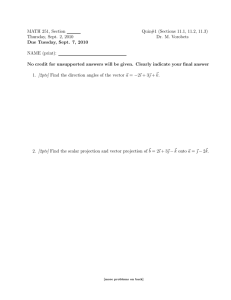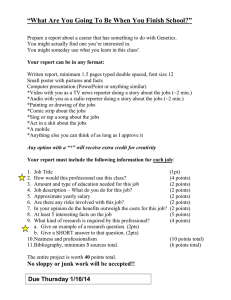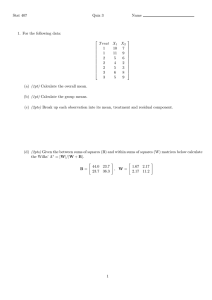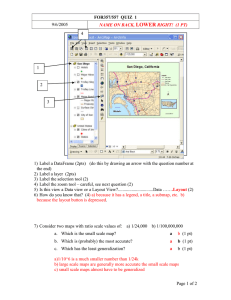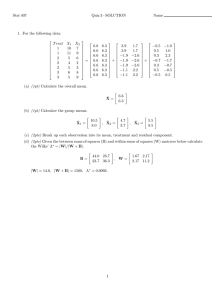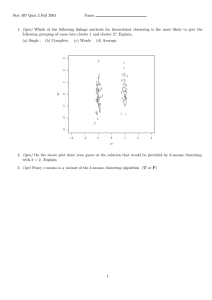Solutions to Homework 1
advertisement
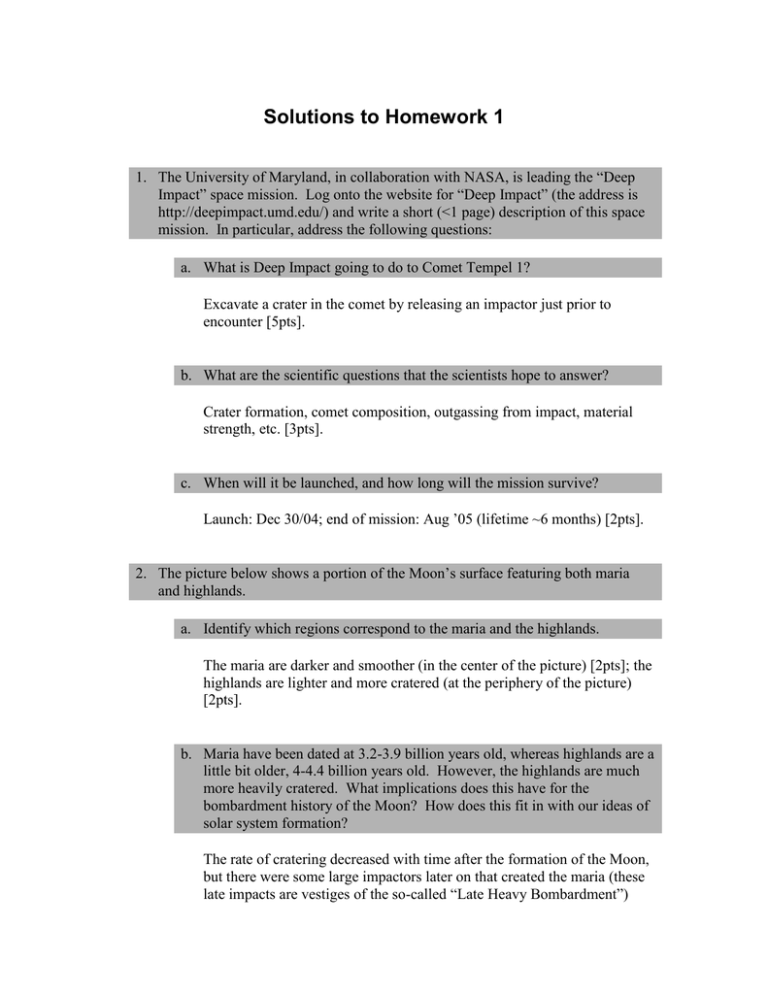
Solutions to Homework 1 1. The University of Maryland, in collaboration with NASA, is leading the “Deep Impact” space mission. Log onto the website for “Deep Impact” (the address is http://deepimpact.umd.edu/) and write a short (<1 page) description of this space mission. In particular, address the following questions: a. What is Deep Impact going to do to Comet Tempel 1? Excavate a crater in the comet by releasing an impactor just prior to encounter [5pts]. b. What are the scientific questions that the scientists hope to answer? Crater formation, comet composition, outgassing from impact, material strength, etc. [3pts]. c. When will it be launched, and how long will the mission survive? Launch: Dec 30/04; end of mission: Aug ’05 (lifetime ~6 months) [2pts]. 2. The picture below shows a portion of the Moon’s surface featuring both maria and highlands. a. Identify which regions correspond to the maria and the highlands. The maria are darker and smoother (in the center of the picture) [2pts]; the highlands are lighter and more cratered (at the periphery of the picture) [2pts]. b. Maria have been dated at 3.2-3.9 billion years old, whereas highlands are a little bit older, 4-4.4 billion years old. However, the highlands are much more heavily cratered. What implications does this have for the bombardment history of the Moon? How does this fit in with our ideas of solar system formation? The rate of cratering decreased with time after the formation of the Moon, but there were some large impactors later on that created the maria (these late impacts are vestiges of the so-called “Late Heavy Bombardment”) [3pts]. This is consistent with the idea that small planetesimals grew into a smaller number of larger planetesimals, most of which were in turn incorporated into planets/the Moon [3pts]. 3. Calculate the energy and momentum of the following objects. Compare and discuss your answers to parts (a) and (c). a. A 1000 kg car traveling at 10 m/s. E = 5104 J; p = 104 kg m/s [2pts]. b. A 1 kg basketball traveling at 20 m/s. E = 200 J; p = 20 kg m/s [2pts]. c. A 1 g rock traveling at 10 km/s. (Note the units!) E = 5104 J; p = 10 kg m/s [2pts]. The rock has the same kinetic energy as the car, but only 1/1000th the momentum [2pts]. This means they would both deliver the same impact energy (so they’re equally dangerous), but the car would impart a greater mechanical force to its surroundings [2pts].
